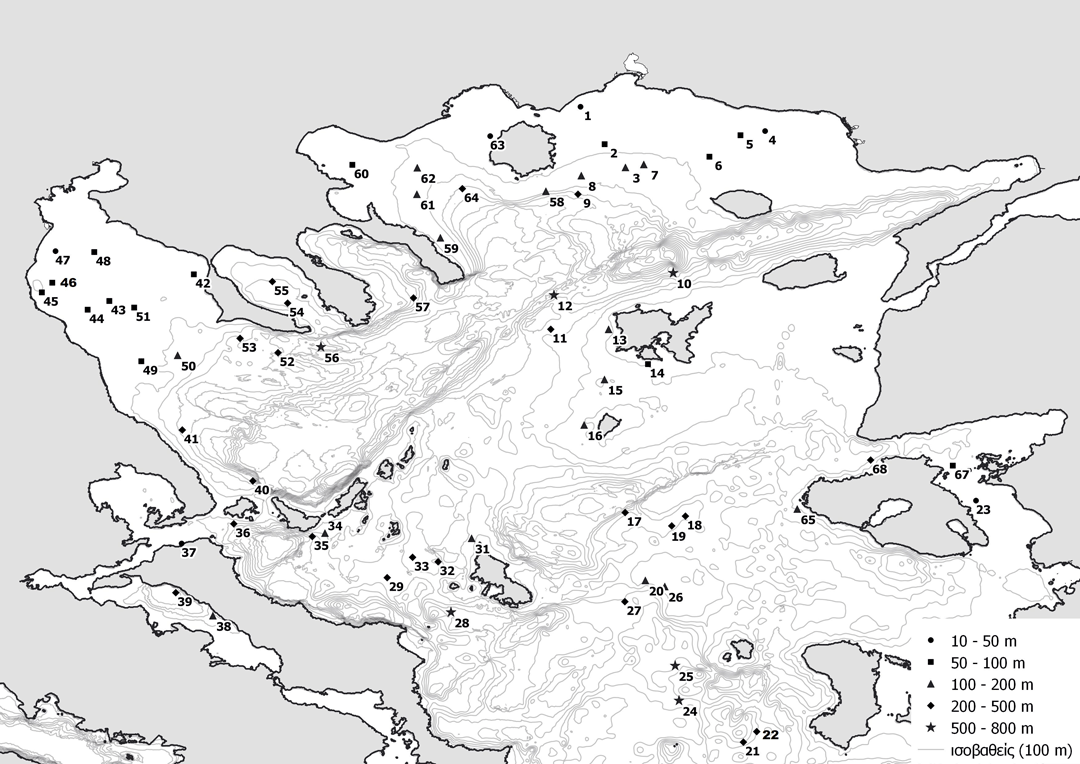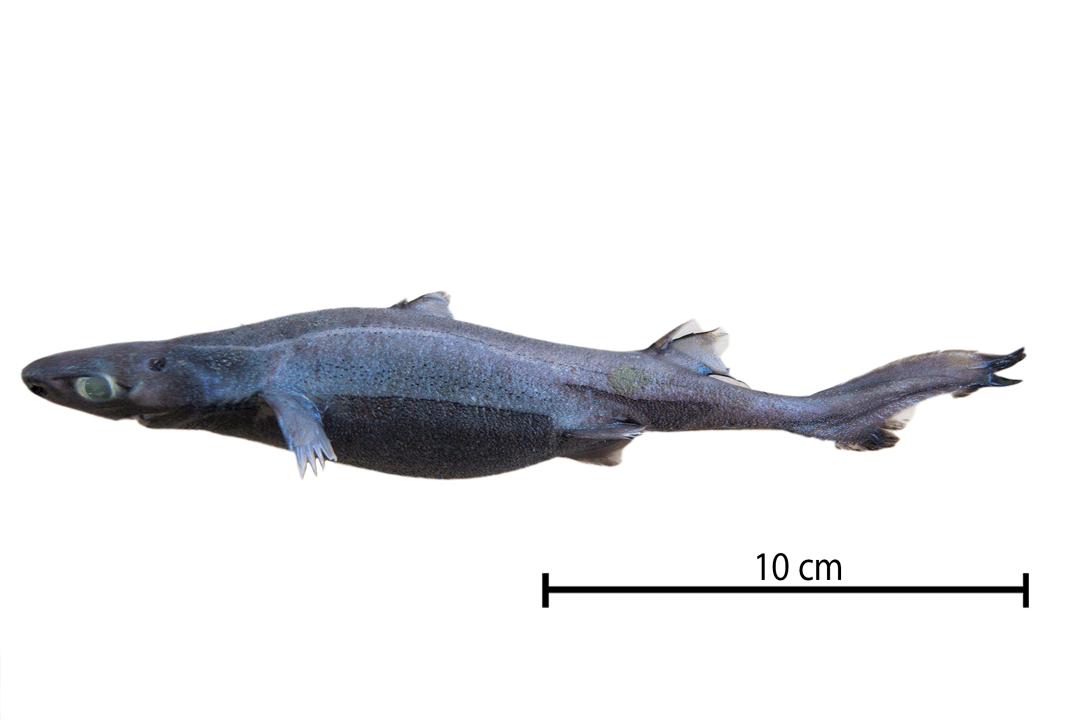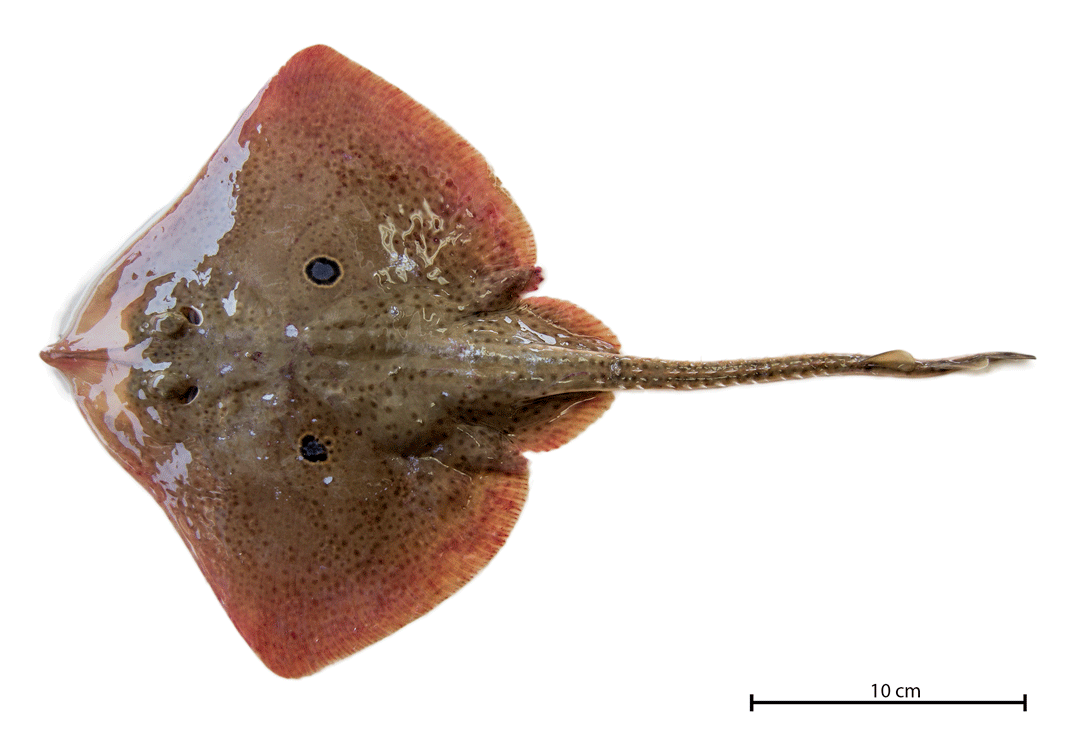Surveying for chondrichthyans in the North Aegean
The Fisheries Research Institute spent over a month and 2 different crews on a trawler at the North Aegean Sea (Greece) fishing across different sites of depths (Fig. 1). The expedition, a part of the Mediterranean International Trawl Surveys (MEDITS), takes place every year during June-July. The survey focuses on collecting and subsequently processing fisheries data. Despite the fact that the survey mainly targets species of commercial importance within the Aegean Sea, a number of additional species are bound to be caught. These non-target species include crabs, sponges, soft corals, and a range of deep-water critters (deep-water for the North Aegean is about 650 m).
 During the survey, we collect information from all the species we encounter. We measure fish lengths and weights, fish maturity stages, collect muscle samples for genetic analyses, otoliths for ageing fish, parasites, shrimp sizes, identify and weigh a diversity of invertebrates, and marine litter. Such information can be used to answer questions on population structure, species richness and their distribution, and marine pollution among others.
During the survey, we collect information from all the species we encounter. We measure fish lengths and weights, fish maturity stages, collect muscle samples for genetic analyses, otoliths for ageing fish, parasites, shrimp sizes, identify and weigh a diversity of invertebrates, and marine litter. Such information can be used to answer questions on population structure, species richness and their distribution, and marine pollution among others.

Rare rabbit fish. Image © Chrysoula Gubili

Velvet belly lantern shark. Photo © Chrysoula Gubili
Chondrichthyans are considered one of the target groups of the survey and special care is given to collect all biological data and specimens when required. Each sampling station and depth zone would reveal different species composition and abundance; from the rare rabbit fish (Chimaera monstrosa, Fig. 2), the velvet belly lantern shark (Etmopterus spinax), the kitefin shark (Dalatias licha), and the more common small-spotted catshark (Scyliorhinus canicula).

Spotted ray. Photo © Chrysoula Gubili
Batoids were also caught in most hauls. In total, 156 batoids (Myliobatiformes, Rajiformes and Torpediniformes) were measured, whereas Rhinopristiformes were completely absent; unfortunately, there hasn’t been any record for the last few years. Among the rays, those with the highest frequency were the thornback ray (Raja clavata), the speckled ray (R. polystigma), the spotted ray (R. montagui), and the endemic rough ray (R. radula). Such data is valuable as it will be added to the existing time series, to detect fluctuation in chondrichthyan biomass over time.

Brown skate. Photo © Chrysoula Gubili
Days can be long on a trawler, sorting and measuring fish from 2-4 hauls per day. By the end of each day though, you remember crazy and intense moments with your friends having a cold beer and delicious food!
